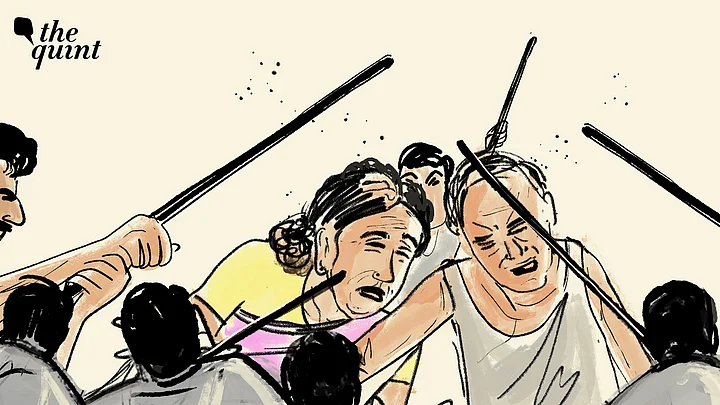Odisha continues to grapple with the disturbing reality of witch-hunting crimes, a menace that remains deeply embedded in certain regions of the state.
The recent brutal murder of an elderly couple in Mayurbhanj district over allegations of sorcery highlights the ongoing threat faced by those accused of practicing witchcraft. The victims – targeted due to suspicions of causing frequent illnesses in a local family – represent a long history of individuals, particularly women, being falsely accused and subjected to horrific violence.
This is not an isolated event but part of a larger pattern that has plagued the state for years.
According to National Crime Records Bureau (NCRB) data, the state recorded 99 cases in 2017, up from 83 in 2016 and 58 in 2015. In 2018, five witchcraft-related murders were reported, while in 2019, the number rose to 19, contributing to a national total of 102.
More recently, Odisha registered 102 cases in 2022, 79 in 2021, and 95 in 2020.
These rising numbers underscore the critical urgency of the issue and the pressing need for effective interventions to tackle it.
Personal Vendettas, Not Supernatural Beliefs
Despite the implementation of awareness campaigns involving Anganwadi workers and self-help groups, a composite action plan emphasising inter-departmental coordination, and victim rehabilitation efforts such as counselling, skill development, and the inauguration of a memorial in Keonjhar, Odisha continues to be one of the top states in India for witch-hunting cases.
The effectiveness of these initiatives is hindered by inconsistent implementation, lack of dedicated budget allocation, and entrenched superstitions that perpetuate the practice.
An existing study by the Odisha State Commission for Women and Action Aid, an international NGO on witch-hunting crimes in the state, reveals that these cases are often rooted in personal conflicts rather than genuine belief in the supernatural.
Allegations frequently arise in response to health crises and economic distress.
Around 43.5 percent of cases are linked to the illness of an adult family member
27 percent stem from health issues in children
24.5 percent are tied to land disputes or misfortune
5 percent are attributed to crop failures
These statistics suggest that accusations of witchcraft are often used as a tool for eliminating rivals, seizing land, or settling personal vendettas under the guise of superstition.
The Lingering Data Void
Compounding the problem is the delay in the release of crime data.
The most recent NCRB report available is from 2022, leaving a concerning gap in updated statistics for 2023 and 2024. The Ministry of Home Affairs has cited the complexity of data collection and validation as reasons for the delay, but the absence of timely crime reports hinders effective policy interventions.
Without up-to-date figures, it becomes difficult to assess whether legal measures are working or if new strategies are needed to combat these crimes.
The Odisha Prevention of Witch-Hunting Act, 2013 criminalises witch-branding, imposes strict penalties, and provides safeguards for victims. However, enforcement remains weak in many rural areas, where social beliefs override legal deterrents.
Why do such crimes still thrive in Odisha? A mix of poverty, lack of education, and inadequate healthcare fuels belief in witchcraft.
In many rural areas, illnesses and misfortunes are still attributed to supernatural forces rather than medical or economic reasons. The reluctance of victims and their families to report cases, either due to fear or lack of faith in law enforcement along with lack of legal awareness, or societal pressure, further allows these crimes to go unchecked.
Further, the Act lacks provisions to tackle the deep-rooted social stigma and ostracisation faced by victims.
Many accused individuals and their families are forcefully driven out of villages, suffering long-term social and economic exclusion. Moreover, despite legal measures, informal kangaroo courts often hold more influence than legal authorities, undermining justice. Several cases remain unresolved for years, with families still awaiting reintegration.
Efforts to curb such crimes have yet to bring visible change, as tribal-dominated districts like Mayurbhanj, Keonjhar, Sundargarh, Malkangiri, and Ganjam continue to witness the highest number of cases.
Superstition often serves as a facade for more sinister motives, including land disputes, personal rivalries, and nearly ineradicable gender biases. Women, in particular, become easy targets, as accusations of witchcraft are frequently used to justify violence against them.
The NCRB has consistently ranked Odisha second in the country for witch-hunting cases, just behind Jharkhand.
However, these figures only account for reported cases. Many incidents go unregistered due to fear, social stigma, and distrust in law enforcement, making the actual scale of the problem much larger.
Community engagement, stricter implementation of laws, and continued awareness campaigns could dismantle these regressive beliefs and break the cycle of violence and misinformation that fuels these crimes. Until then, Odisha remains haunted by a dark reality, one where superstition, conflict, and systemic failures continue to cost lives.
(The author is a PhD candidate, Journalism and Mass Communication at Utkal University, Bhubaneswar, Odisha. This is an opinion piece. The views expressed above are the author’s own. The Quint neither endorses nor is responsible for the same.)
